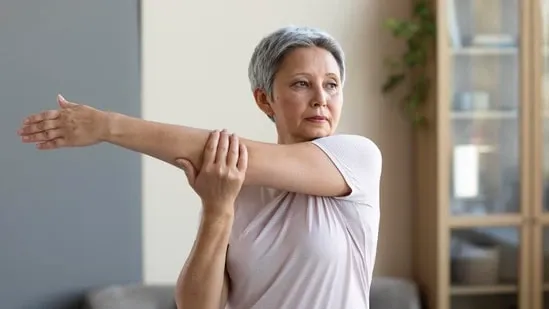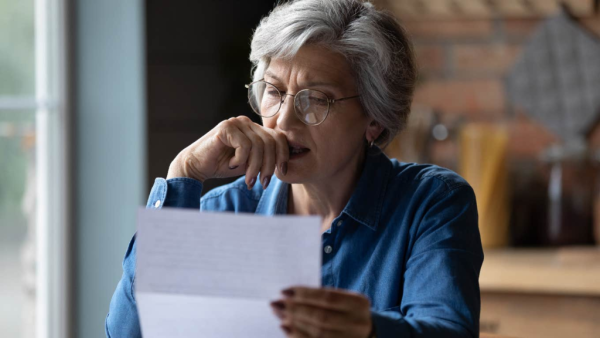Gynaecologist shares 8 facts about osteoporosis in women; know causes and prevention steps
admin | September 16, 2025 2:22 PM CST

Due to loss of estrogen after menopause, women are physically at more risk of osteoporosis. In an interview with HT Lifestyle, Dr. Ashwin Shetty, consultant, obstetrics and gynaecology, Sir H.N. Reliance Foundation Hospital shared a few facts about osteoporosis in women, and what causes it.
What is osteoporosis?
Osteoporosis is a condition in which bones decrease in overall mass. With the loss of mass, bones become brittle or fragile and will fracture more easily.
Osteoporosis affects both genders but women more
While individuals of all genders can develop osteoporosis, women are more at risk for significant osteoporosis after they have become post-menopausal, resulting from hormonal changes.
Here's what you need to know about osteoporosis in women:
1. Estrogen is important for bone health
During menopause, there is a rapid decline in the amount of estrogen produced by the body. Estrogen helps to maintain normal bone density. It does this by regulating the function of the cells that resorb bone. After menopause, estrogen levels decrease, which means that bone resorption is greater than bone formation. This can lead to loss of mass very rapidly.
2. Bone loss may be severe after menopause
Women experience the loss of up to 20% of bone mass after the first 5-7 years of menopause before recovery begins. This allowed increased risk of fracture.
3. Areas of fracture risk
Post-menopausal women are at greater risk of spinal, hip, and wrist fractures as a result of bone loss.
 4. Risk factors other than hormones
Additional risk factors include family history, low body weight, sedentary lifestyles, low calcium and vitamin D intake, smoking, and excessive alcohol consumption.
5. Osteoporosis is a silent disease
Osteoporosis is often not recognised until a fracture occurs; hence it is referred to as a silent disease.
6. Screening is important
Finding out that you have osteoporosis early is important. The best way to screen for osteoporosis is with a Bone Mineral Density test (DEXA scan). Women should be screened no later than age 50, or younger if they have risk factors.
7. Preventative steps can make a difference
Dietary intake of calcium and vitamin D, regular weight-bearing exercise, such as walking or strength training, and avoiding smoking and excessive alcohol intake will all help to decrease risks.
8. There are medications available for some higher risk individuals
Some individuals will be prescribed medications to treat osteoporosis, either to decrease the rate of bone loss or increase the rate of new bone formation.
4. Risk factors other than hormones
Additional risk factors include family history, low body weight, sedentary lifestyles, low calcium and vitamin D intake, smoking, and excessive alcohol consumption.
5. Osteoporosis is a silent disease
Osteoporosis is often not recognised until a fracture occurs; hence it is referred to as a silent disease.
6. Screening is important
Finding out that you have osteoporosis early is important. The best way to screen for osteoporosis is with a Bone Mineral Density test (DEXA scan). Women should be screened no later than age 50, or younger if they have risk factors.
7. Preventative steps can make a difference
Dietary intake of calcium and vitamin D, regular weight-bearing exercise, such as walking or strength training, and avoiding smoking and excessive alcohol intake will all help to decrease risks.
8. There are medications available for some higher risk individuals
Some individuals will be prescribed medications to treat osteoporosis, either to decrease the rate of bone loss or increase the rate of new bone formation.
 4. Risk factors other than hormones
Additional risk factors include family history, low body weight, sedentary lifestyles, low calcium and vitamin D intake, smoking, and excessive alcohol consumption.
5. Osteoporosis is a silent disease
Osteoporosis is often not recognised until a fracture occurs; hence it is referred to as a silent disease.
6. Screening is important
Finding out that you have osteoporosis early is important. The best way to screen for osteoporosis is with a Bone Mineral Density test (DEXA scan). Women should be screened no later than age 50, or younger if they have risk factors.
7. Preventative steps can make a difference
Dietary intake of calcium and vitamin D, regular weight-bearing exercise, such as walking or strength training, and avoiding smoking and excessive alcohol intake will all help to decrease risks.
8. There are medications available for some higher risk individuals
Some individuals will be prescribed medications to treat osteoporosis, either to decrease the rate of bone loss or increase the rate of new bone formation.
4. Risk factors other than hormones
Additional risk factors include family history, low body weight, sedentary lifestyles, low calcium and vitamin D intake, smoking, and excessive alcohol consumption.
5. Osteoporosis is a silent disease
Osteoporosis is often not recognised until a fracture occurs; hence it is referred to as a silent disease.
6. Screening is important
Finding out that you have osteoporosis early is important. The best way to screen for osteoporosis is with a Bone Mineral Density test (DEXA scan). Women should be screened no later than age 50, or younger if they have risk factors.
7. Preventative steps can make a difference
Dietary intake of calcium and vitamin D, regular weight-bearing exercise, such as walking or strength training, and avoiding smoking and excessive alcohol intake will all help to decrease risks.
8. There are medications available for some higher risk individuals
Some individuals will be prescribed medications to treat osteoporosis, either to decrease the rate of bone loss or increase the rate of new bone formation.
READ NEXT
-
Singapore TV host Lee Teng spends nearly $80,000 on son’s birth

-
Hannah Einbinder shouts ‘Free Palestine’ at Emmys

-
Is the child ignoring in drinking milk? Make milk delicious with these smart methods

-
Volunteer Asks If Essay Contest Winner Should Have To Return $1,000 Reward After Learning She Used AI

-
3 Zodiac Signs Enter A Powerful New Era Starting On September 16, 2025
